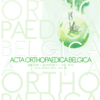Analysis of morphological parameters in pelvic radiography and hip MRI : a practical reporting recommendation
hip morphology ; magnetic resonance imaging (MRI) ; pelvic radiography (PR) ; femoro-acetabular impingement ; Tönnis sign ; reporting
Published online: Sep 14 2021
Abstract
Although numerous criteria have been proposed to define abnormal hip morphology, mostly used in the diagnosis of femoroacetabular impingement, it is not a practical approach to measure all of these parameters in all cases without clinical suspicion.
In this study, our aim was to develop an evaluating and reporting standardization for routine hip exami- nations to define both hip morphology and impingement.
A total of 108 patients with routine hip magnetic resonance imaging (MRI) and antero-posterior pelvic radiograph (PR) were included in this retrospective study. Alpha angle (AA), acetabular depth (AD), acetabular protrusion, acetabular anteversion, collo- diaphyseal angle (CDA), lateral center-edge angle (LCEA) and Tönnis angle (TA) were measured. The differences and associations between these parameters were evaluated according to imaging modality or plane, and sex.
Although a significant difference has been found between the axial AA and the coronal AA mean values measured on MRI, there was also a strong correlation. Coronal measurements were significantly higher. AA values measured in PR and coronal MRI were comparable. Males had higher AA in both planes as compared to females. There were no significant differences between CDA values in MRI and PR. There was a significant difference and a moderate correlation between AD values in MRI and PR. We suggest that routine reports should include a measurement of AA in two planes, and measurement of CDA in PR or MRI. Due to the difference in AD between MRI and radiography, LCEA or TA may represent better alternatives. Checking for a negative Tönnis sign would represent a practical approach.
